
Nikon D700 + Nikkor 24-70mm f/2.8 @ 34 mm — 1/125 sec, f/2.8, ISO 220 — map & image data — nearby photos
Grandma's Helper
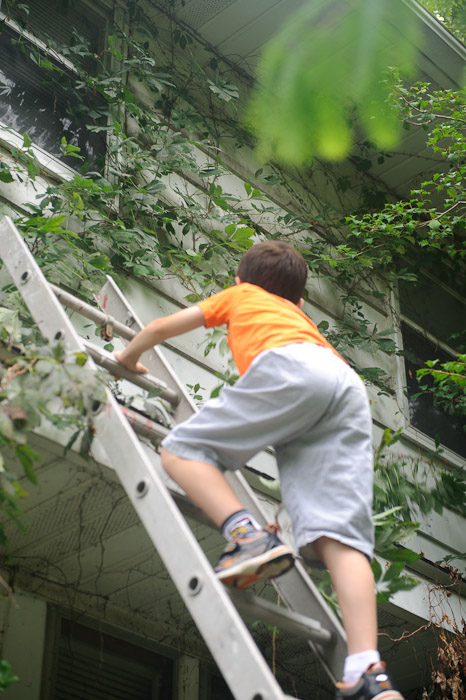
Nikon D700 + Nikkor 24-70mm f/2.8 @ 70 mm — 1/125 sec, f/3.5, ISO 360 — map & image data — nearby photos
Clearing Vines
Mom thought the vines on the side of the house had crossed over from “quaint” to “a bit too much”, so we cleared them off for the first time in years. Of course, Anthony was excited to help as long as it meant climbing the ladder.
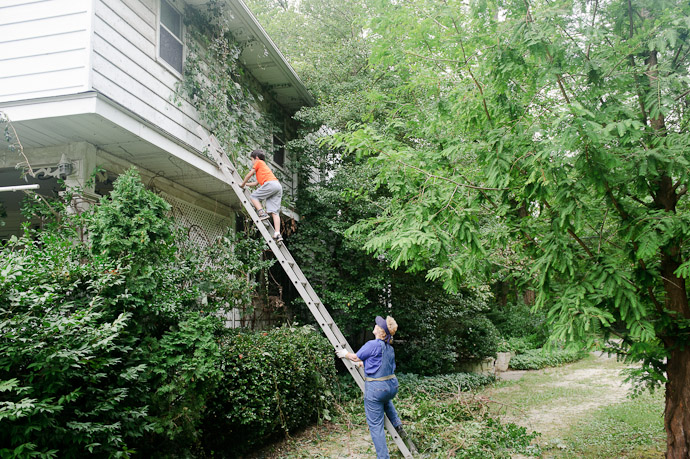
Nikon D700 + Nikkor 24-70mm f/2.8 @ 32 mm — 1/125 sec, f/5.6, ISO 1100 — map & image data — nearby photos
Safety First
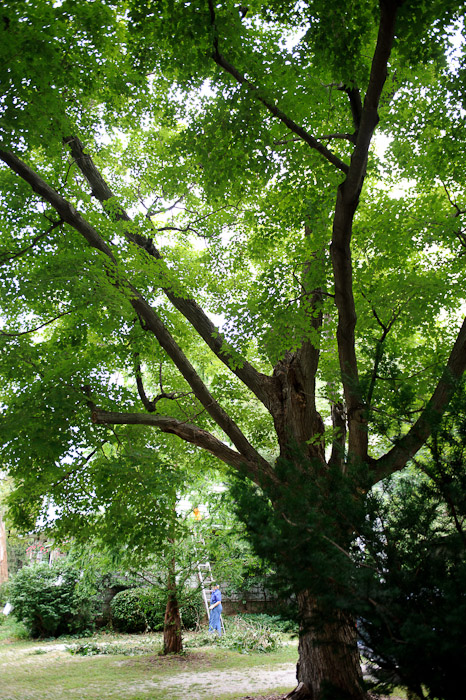
Nikon D700 + Nikkor 24-70mm f/2.8 @ 29 mm — 1/125 sec, f/2.8, ISO 220 — map & image data — nearby photos
I went up to tidy some small bits...

Nikon D700 + Nikkor 24-70mm f/2.8 @ 70 mm — 1/640 sec, f/2.8, ISO 200 — map & image data — nearby photos
Tidying Up
Photo by Anthony
The siding looks dirty, but it's actually all the remains of the adhesive tendrils of the vines...
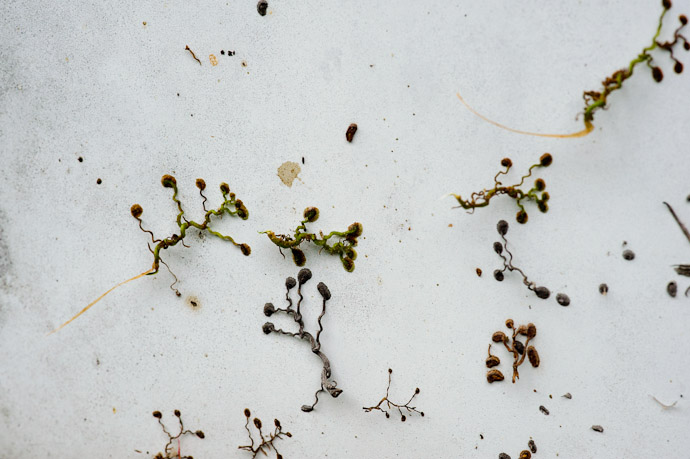
Nikon D700 + Voigtländer 125mm f/2.5 — 1/320 sec, f/16, ISO 1250 — map & image data — nearby photos
Remains of the Vine's Adhesive Tendrils
These things seem to adhere on the molecular level; when I would try to pull them off of the wooden fences at my place in California when I lived there, they would take bits of wood with them because the bond was stronger than the wood. Amazing....
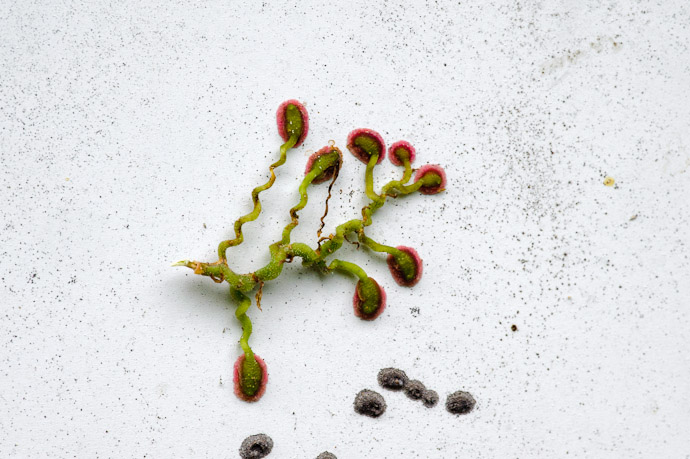
Nikon D700 + Voigtländer 125mm f/2.5 — 1/320 sec, f/11, ISO 1800 — map & image data — nearby photos
These Bonds are Forever
I searched around on the web but couldn't find anything on what this adhesive is or how on earth the plant makes it.
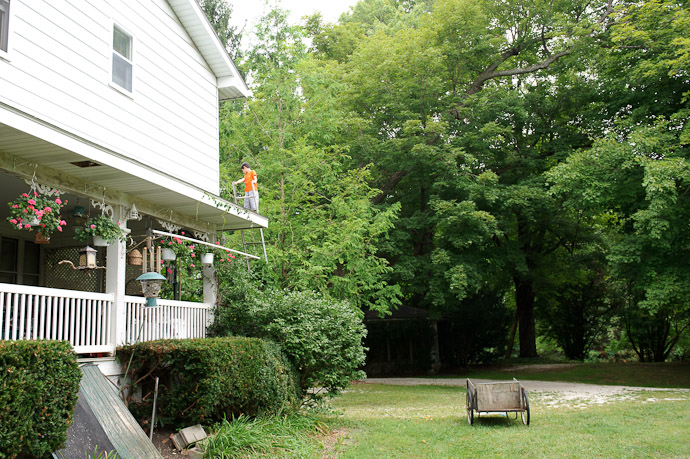
Nikon D700 + Nikkor 24-70mm f/2.8 @ 32 mm — 1/125 sec, f/5, ISO 220 — map & image data — nearby photos
Checking Out The View From Above
one last time
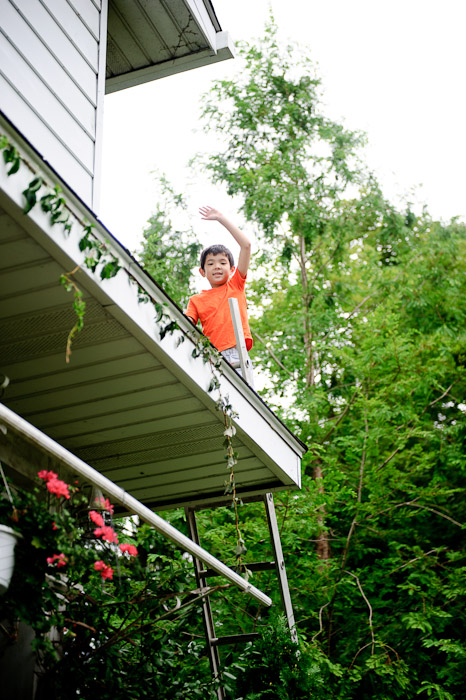
Nikon D700 + Nikkor 24-70mm f/2.8 @ 58 mm — 1/1000 sec, f/2.8, ISO 200 — map & image data — nearby photos

Nikon D700 + Voigtländer 125mm f/2.5 — 1/800 sec, f/2.5, ISO 200 — map & image data — nearby photos
Back at Play
The little edge of roof I'm standing on in “Tidying Up” above is covered with the same standard asphalt roofing shingles that cover the rest of the roof, and while they look bland and uniform from a distance, up close with a good macro lens they show all kinds of detail...
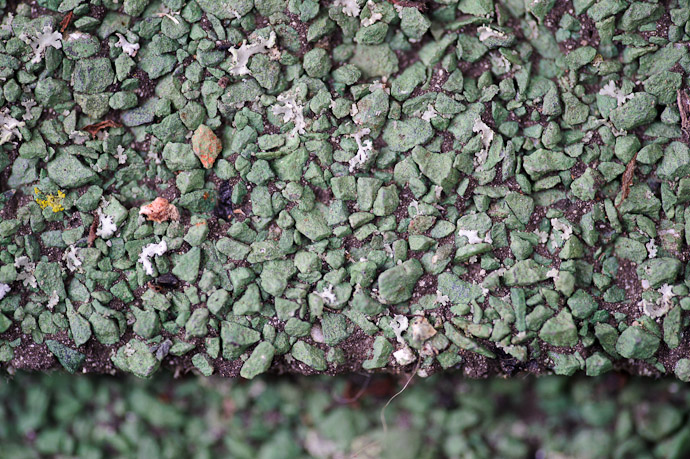
Nikon D700 + Voigtländer 125mm f/2.5 — 1/320 sec, f/2.5, ISO 900 — map & image data — nearby photos
Roofing Shingles
perhaps 1/8th of an inch thick
This is, of course, the answer to the Rocky “What am I?” Quiz from the other day.
I presume you saw this (brief) article which indicates ivy/vines use hydrogen bonding at the nano-particle level.
http://www.popsci.com/scitech/article/2008-04/not-your-average-wall-climber
I’d always wondered, too, about the adhesive tendrils. I hope this answers the question satisfactorily…
“The adhesive appears as a highly heterogeneous, raftlike structure and consists of pectinaceous, rhamnogalacturonan (RG) I-reactive components surrounding a callosic core. In addition, more mobile components, composed of arabinogalactans and mucilaginous pectins, intercalate both the support and the tendril, penetrating the tendril to the proximal ends of the papillate cells. Following adherence to the support, the anticlinal walls of the papillate cells are devoid of RG I side-chain reactivity, indicating that extensive debranching of RG I molecules has taken place. Furthermore, a large amount of RG I backbone reactivity was observed in the contact area. These results may indicate that the debranched RG I molecules diffuse into and permeate the contact region, forming an integral part of the adhesive compound. These results indicate that Virginia creeper adheres to objects by a composite adhesive structure consisting of debranched RG I, callose, and other, less-well characterized mucilaginous pectins and that this structure subsequently becomes lignified and very weather-resistant upon the ultimate senescence of the tendril. ”
[from http://www.ingentaconnect.com/content/klu/709/2008/00000232/f0020003/00000287%5D
Now we know !
Question for Grandma Friedl: Is that a dawn redwood (Metasequoia) off to the side of the third photograph ? I wish I’d planted one here when we came, 16 years ago.
Thank you, Peter, for that succinct, lucid, and so-illuminating explanation of how Virginia Creeper vines cling. It clearly showed my that my microbiology education, and my dictionary, are incomplete.
May we assume that you used the “cut-and-paste” tool rather than actually copying every word? 😀
And good for you and your sharp eye…that is indeed a Dawn Redwood.
I first planted it into a pot when it was a six-inch seedling. A few years later it was four feet tall and we planted it in the drive to replace a 100 year-old maple destroyed by a tornado. I would encourage you to still plant one in your yard today. Just put it where it has room to spread. It will be a beautiful specimen tree.
They grow extremely fast…this one is less than ten years old, if I recall, but as tall as the house. We’ve had to cut back the lower branches several times to allow cars to get by. (Probably a drive wasn’t a good choice for such a large fast=growing tree.)
But the needles are so soft and feathery and the bark so interesting that I’ve planted more around the place. May have a forest of them before long. Do yourself a treat and put one in. You’ll not be sorry.
Thanks for the encouragement, Grandma Friedl: I think you are right and I should put a dawn redwood in here somewhere – even when young they are attractive. I do know that they grow considerably more slowly here than in the USA (I think that tallest in the UK are about 25m in 60 years) but still are lovely trees; good autumn colour too, which appeals to me.
As for the Virginia creeper: I’d still be typing if I had had to copy it word for word !